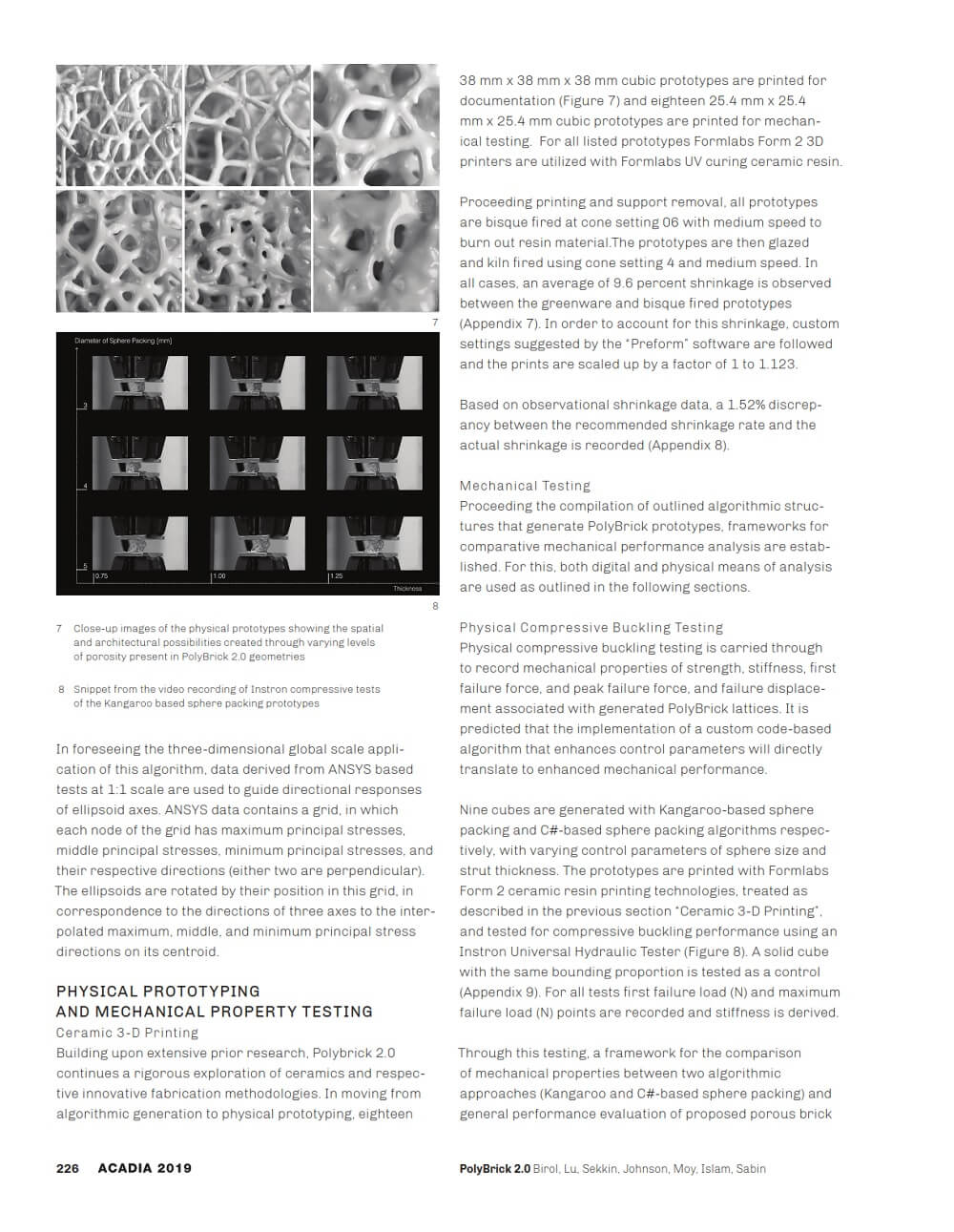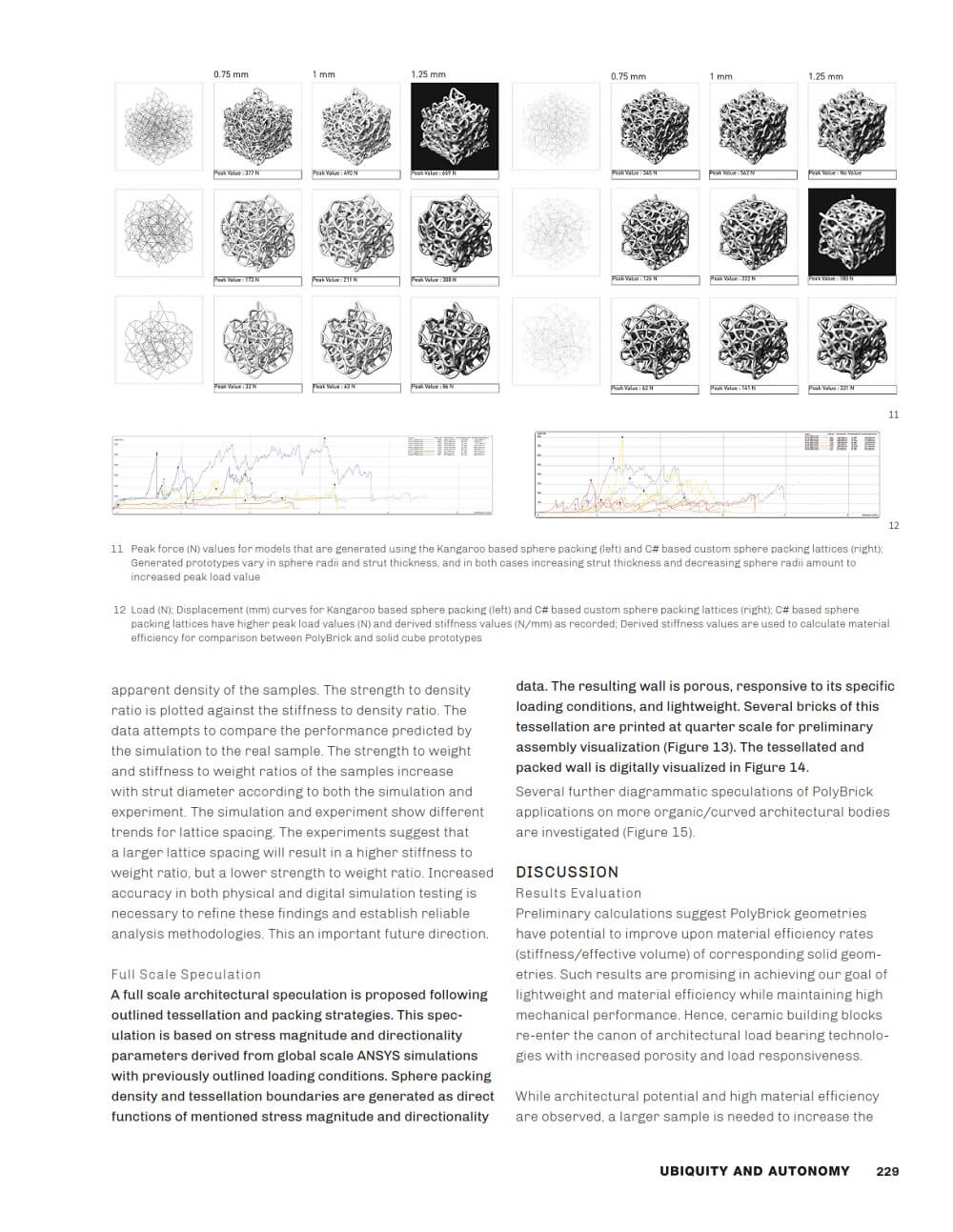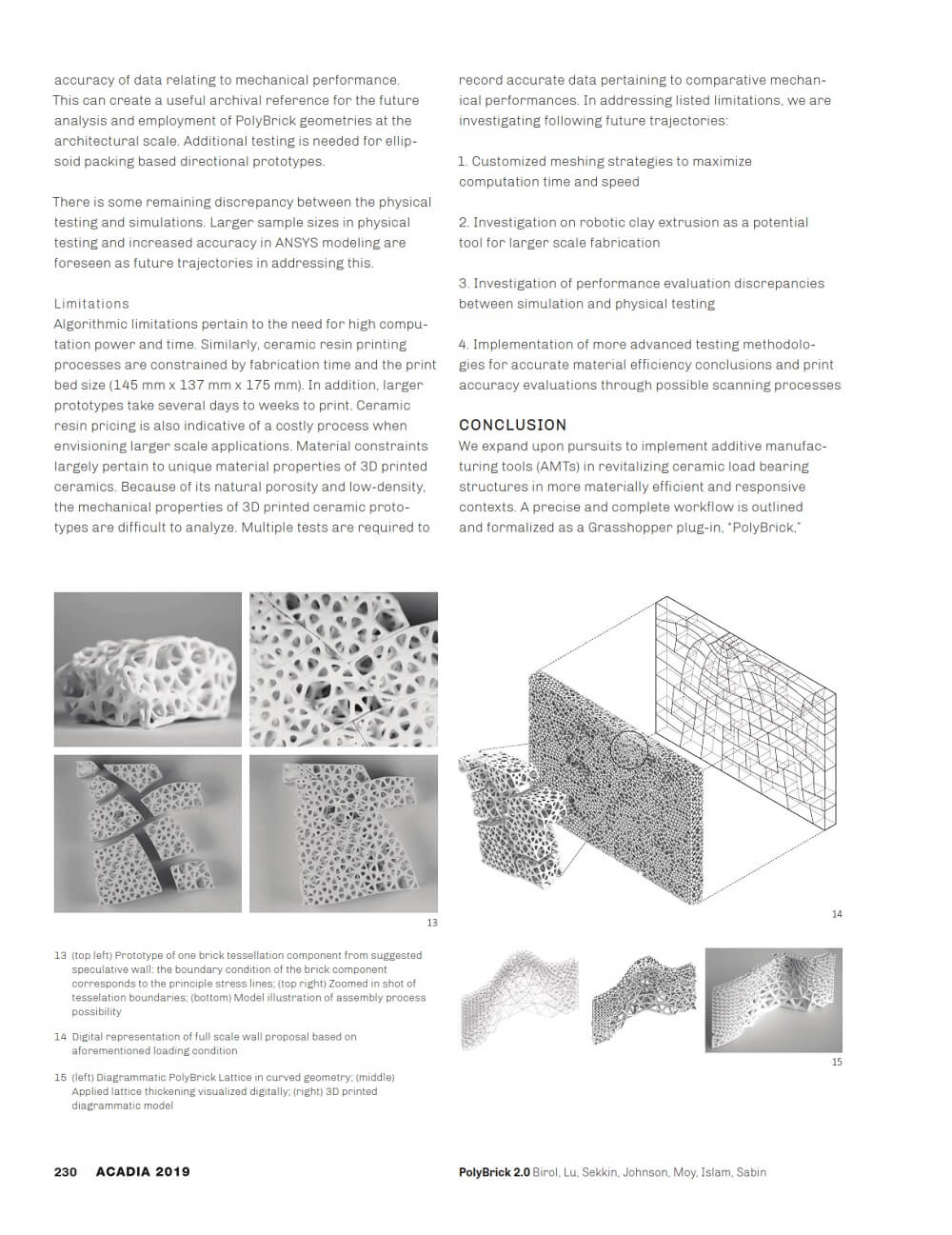PolyBrick 2.0

Natural load bearing structures are characterized by aspects of specialized morphology, lightweight, adaptability, and a regenerative life cycle. PolyBrick 2.0 aims to learn from and apply these characteristics in the pursuit of revitalizing ceramic load bearing structures. For this, algorithmic design processes are employed, whose physical manifestations are realized through available clay/porcelain additive manufacturing technologies (AMTs).

In this paper by Eda Begum Birol, Yao Lu, Ege Sekkin, Colby Johnson, David Moy, Yaseen Islam and Jenny Sabin through integrating specialized expertise across disciplines of architecture, engineering, and material science, authors propose an algorithmic toolset to generate PolyBrick geometries that can be applied to various architectural typologies. Additionally, comparative frameworks for digital and physical performance analyses are outlined.

Responding to increasing urgencies of material efficiency and environmental sensibility, this project strives to provide for designers a toolset for environmentally responsive, case-specific design, characterized by the embedded control qualities derived from the bone and its adaptability to specific loading conditions. Various approaches to brick tessellation and assembly are proposed and architectural possibilities are presented. As an outcome of this research, PolyBrick 2.0 is effectively established as a Grasshopper plug-in, “PolyBrick” to be further explored by designers.





























Comments